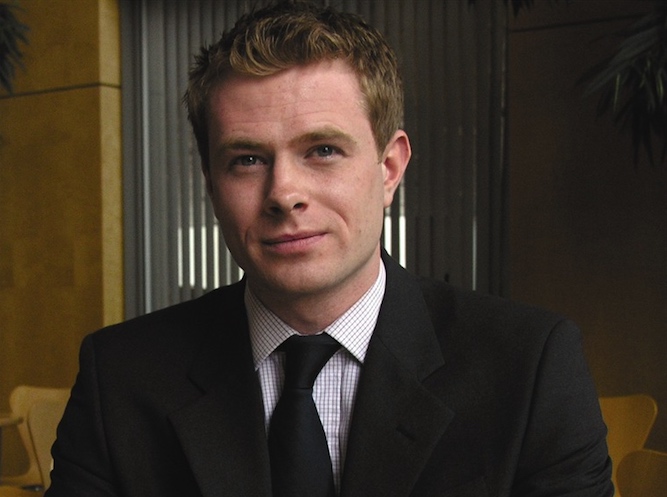Uncertainties in the United States about Trump’s upcoming policies, developments in inflation, Fed rate hikes, and the strength of the dollar, as well as investors’ continued negative sentiment toward emerging markets are all reasons why Schroders’ managers are still cautious and hold defensive positions regarding these assets. But, as there are very positive factors within these markets, at the management company they are convinced that their positions will become much bolder over the next year … especially in emerging debt in local currency, and always very selectively.
In an interview with Funds Society, Matthew Michael, Emerging Market Debt & Commodities Product Director at Schroders was constructive with emerging debt where, in his opinion, the bottom line is the fundamentals. “We are constructive with the fundamentals of emerging debt, but not in all countries. In some markets, crises have brought opportunities,” he explains, referring to markets where political changes open up opportunities (such as India, Indonesia, Argentina, Brazil or South Africa). Thus, government change and the establishment of reformist policies are one of the aspects of improvement.
Secondly, currencies have fallen sharply and allowed many markets to adjust their current accounts: “Currencies have fallen 40% in four years. It is true that there is risk of further falls but we are already at a point where we can see benefits derived from the last depreciations,” in markets such as Indonesia or Brazil, he explains. In some of them you can get a carry of 3% to 4% as a result of selling dollars and buying emerging currencies… hence his commitment to debt in local currency. “External sovereign debt is not as attractive because it is linked to US Treasury bonds, which could fall if interest rates rise,” he adds.
The third factor in favor are the valuations, which are at levels even down to 2003 in countries like South Africa – with yields of 7.5%. “There are some markets that have never been so cheap,” he says. Markets like India, Brazil or Russia offer carrys of between 5% and 10%, he adds. “Profitability is above the historical average,” he explains.
Selection: the key
However, it’s not all rosy, and selection is the key: “In some countries, investors are underestimating the risks. Indonesia and Turkey are at the same level of profitability but the first country has a pro-growth agenda and has no debt problems, while the second is of international concern,” he warns.
In order to select the positions of the Emerging Markets Debt Absolute Return Fund, a fund with a philosophy of absolute return that is generating a lot of interest among investors, fund managers focus on the fundamentals, as well as a risk note given to each market, and also in technical aspects and sentiment. Factors that make him positive towards markets like Brazil, but as yet they do not advise investing in Mexico (where the technical factors are not supportive).
And the timing is key, argues the expert: “We reached the US elections with very defensive positions on the behavior of commodities, the strength of the dollar, and the market consensus on Trump’s defeat, factors that led to reduce risk”. But now, facing the end of this year and 2017, he explains that the time will be ripe to invest again, thanks to the attractive yields offered by emerging debt and the attractive fundamentals. “It’s a matter of timing; if we enter too soon we will suffer,” he explains. Hence his positive outlook regarding the asset but his current caution (at the end of October the fund had 36% in liquidity) and the premise of being very selective.
Better LatAm than Asia
Currently, the aforementioned fund’s portfolio favors the Latin American region, with about 40% exposure. “Until a few years ago, we had no exposure to the continent in our portfolio. Currently, we are defensive, but by the end of October the exposure was around 40%,” explains Matthews. The reason? Reformist agendas seen in markets such as Argentina or Colombia, as well as the recovery of commodities (which benefits these markets, along with others such as Chile or Peru). In addition, if Trump pushes the issue of oil and gas again, it could be positive for countries in the region, the most sensitive to these issues.
On the other hand, Asia only weighed just over 9%, less than the emerging Europe (at 13%): “A few years ago, Asia was the region that weighed 40%. Today we like markets like Indonesia, the Philippines or India, where returns are high, but China has yet to implement a major reform, and it still remains to see what its model will be,” explains the expert.
A very expensive dollar
On the dangers of a strong dollar for the asset, emerging local currency debt (in which it invests 56.7% of the fund, with only 7% being in external debt), he admits that it will not help. “There are great opportunities for emerging currencies but buying should still be tactical, for example, in markets sensitive to bullish commodity developments, such as South Africa,” he says. Still, his view is that the dollar is too expensive, at levels of the 1990s.

